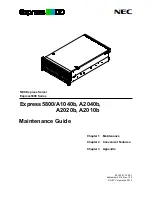
CHAPTER 9 International Languages and Character Sets
321
Multibyte character sets
Some languages, such as Japanese and Chinese, have many more than 256
characters. These characters cannot all be represented using a single byte, but
can be represented in multibyte character sets. In addition, some character sets
use the much larger number of characters available in a multibyte
representation to represent characters from many languages in a single, more
comprehensive, character set.
Multibyte character sets are of two types. Some are variable width, in which
some characters are single-byte characters, others are double-byte, and so on.
Other sets are fixed width, in which all characters in the set have the same
number of bytes. Adaptive Server IQ supports only variable-width character
sets.
Example
As an example, characters in the Shift-JIS character set are of either one or two
bytes in length. If the value of the first byte is in the range of hexadecimal
values from \x81 to \x9F or from \xE0 to \xEF (decimal values 129-159 or 224-
239) the character is a two-byte character and the subsequent byte (called a
follow byte) completes the character. If the first byte is outside this range, the
character is a single-byte character and the next byte is the first byte of the
following character.
•
The properties of any Shift-JIS character can be read from its first byte
also. Characters with a first byte in the range \x09 to \x0D, or \x20, are
space characters.
•
Characters in the ranges \x41 to \x5A, \x61 to \x7A, \x81 to \x9F or \xA1
to \xEF are considered to be alphabetic (letters).
•
Characters in the range \x30 to \x39 are digits.
In building custom collations, you can specify which ranges of values for the
first byte signify single- and double-byte (or more) characters, and which
specify space, alpha, and digit characters. However, all first bytes of value less
than 64 (hex 40) must be single-byte characters, and no follow bytes may have
values less than 64. This restriction is satisfied by all known current encodings.
For information on the multibyte character sets, see “Using multibyte
collations” on page 336.
Summary of Contents for Adaptive Server IQ 12.4.2
Page 1: ...Administration and Performance Guide Adaptive Server IQ 12 4 2 ...
Page 16: ...xvi ...
Page 20: ...Related documents xx ...
Page 40: ...Compatibility with earlier versions 20 ...
Page 118: ...Troubleshooting startup shutdown and connections 98 ...
Page 248: ...Importing data by replication 228 ...
Page 306: ...Integrity rules in the system tables 286 ...
Page 334: ...Cursors in transactions 314 ...
Page 396: ...Users and permissions in the system tables 376 ...
Page 438: ...Determining your data backup and recovery strategy 418 ...
Page 484: ...Network performance 464 ...
Page 500: ...System utilities to monitor CPU use 480 ...
Page 514: ...Characteristics of Open Client and jConnect connections 494 ...
Page 536: ...Index 516 ...
















































